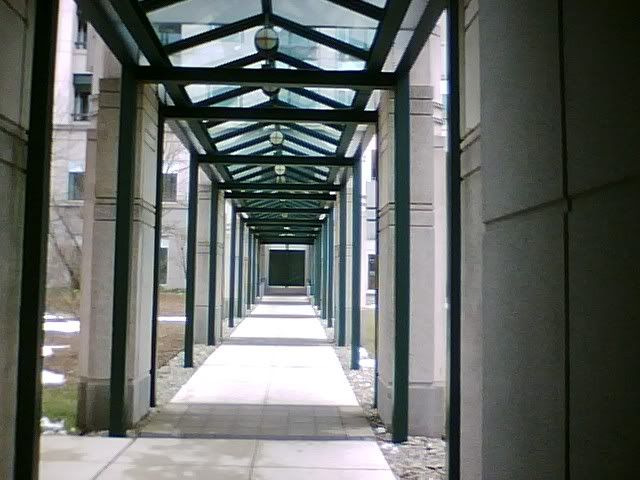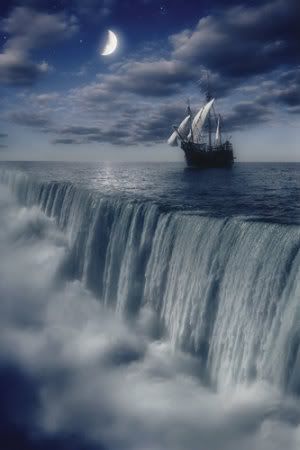THIS IS MY SCRAPBOOK, MY BLOG, MY RANT RAG AND POET'S CORNER. ADDITIONALLY, AN IMPORTANT FUNCTION OF THIS BLOG IS THAT IT ALLOWS ME TO STORE LECTURES AND TALKS WHICH I FIND NECESSARY NEARBY FOR REFERENCE.
Sunday, January 24, 2010
The Theory of Everything
Until very recently, asking what happened at or before the Big Bang was considered by physicists to be a religious question. General relativity theory just doesn’t go there – at T=0, it spews out zeros, infinities, and errors – and so the question didn’t make sense from a scientific view.
But in the past few years, a new theory called Loop Quantum Gravity (LQG) has emerged. The theory suggests the possibility of a “quantum bounce,” where our universe stems from the collapse of a previous universe. Yet what that previous universe looked like was still beyond answering.
Now, physicists Alejandro Corichi from Universidad Nacional Autónoma de México and Parampreet Singh from the Perimeter Institute for Theoretical Physics in Ontario have developed a simplified LQG model that gives an intriguing answer: a pre-Big Bang universe might have looked a lot like ours. Their study will appear in an upcoming issue of Physical Review Letters.
“The significance of this concept is that it answers what happened to the universe before the Big Bang,” Singh told PhysOrg.com. “It has remained a mystery, for models that could resolve the Big Bang singularity, whether it is a quantum foam or a classical space-time on the other side. For instance, if it were a quantum foam, we could not speak about a space-time, a notion of time, etc. Our study shows that the universe on the other side is very classical as ours.”
The finding builds on previous research, with some important differences. Last year, Penn State physicist Martin Bojowald used a simplified version of LQG to show that a universe “on the other side” of the bounce could have existed. However, although that model produced valid math, no observations of our current universe could have lead to any understanding of the state of the pre-bounce universe, as nothing was preserved across the bounce. Bojowald described this as a sort of “cosmic amnesia.”
But Corichi and Singh have modified the simplified LQG theory further by approximating a key equation called the quantum constraint. Using their version, called sLQG, the researchers show that the relative fluctuations of volume and momentum in the pre-bounce universe are conserved across the bounce.
“This means that the twin universe will have the same laws of physics and, in particular, the same notion of time as in ours,” Singh said. “The laws of physics will not change because the evolution is always unitary, which is the nicest way a quantum system can evolve. In our analogy, it will look identical to its twin when seen from afar; one could not distinguish them.”
That means that our universe today, roughly 13.7 billion years after the bounce, would share many of the same properties of the pre-bounce universe at 13.7 billion years before the bounce. In a sense, our universe has a mirror image of itself, with the Big Bang (or bounce) as the line of symmetry.
“In the universe before the bounce, all the general features will be the same,” said Singh. “It will follow the same dynamical equations, the Einstein’s equations when the universe is large. Our model predicts that this happens when the universe becomes of the order 100 times larger than the Planck size. Further, the matter content will be the same, and it will have the same evolution. Since the pre-bounce universe is contracting, it will look as if we were looking at ours backward in time.”
Specifically, Corichi and Singh calculate that the change in relative fluctuations across the bounce is less than 10-56, a number which becomes even smaller for universes that grow larger than 1 megaparsec (our universe is somewhere between 3,000 and 6,000 megaparsecs).
As the researchers explain, having an identical twin universe would not necessarily mean that every single feature of both universes would be identical. For instance, it doesn’t imply that there was another you that existed at some point, a person who has already lived your life.
“If one were able to look at certain microscopic properties with a very strong microscope – a very high-energy experiment probing the Planck scale – one might see differences in some quantities, just as one might see that twins have different fingerprints or one has a mole and the other does not, or a different DNA,” Singh said.
As Singh explained, there are still many questions regarding the details of the possible pre-bounce universe.
“The biggest question is whether these features survive when we consider more complex situations,” he said. “For example, one would like to know whether some structures present in the previous universe – like galaxies – will leave some imprint in the new expanding one that will give rise to identical structure or just 'similar.' For instance, it could happen that, in the previous universe, galaxies formed in a different way, so one might have a different distribution of galaxies on the other side. We will be able to answer this question when we understand these models.”
Ultimately, Corichi and Singh’s model might even tell us what a future universe would look like. Depending on how fast our present universe is accelerating – which will ultimately determine its fate – there’s a possibility that a generalization of the model would predict a re-collapse of our own universe.
“Such a universe will have many bounces from one branch to another,” Singh said. “It is also possible that universes in different branches will be identical.”
Corichi, Alejandro, and Singh, Parampreet. “Quantum bounce and cosmic recall.” Arxiv:0710.4543v2. Accepted for publication in Physical Review Letters.
Copyright 2008 PhysOrg.com.
Tuesday, January 19, 2010
Brahms Symphony 2 Riccardo Muti, New York Philharmonic
..
Wednesday, January 13, 2010
I AM A VERY FORTUNATE PERSON SO I AM TOLD
I AM NOT ALLOWED TO WANDER TOO FAR
IT IS FOR MY OWN GOOD THEY SAY
I AM ALLOWED OUT FOR 15 MINUTES - -
ONCE EVERY DAY
PROVIDING THAT I ADHERE TO THE RULES AND REGULATIONS
MY LIFE IS GOOD, SO I AM TOLD
BUT I NEVER TRY TO BE TOO BOLD...
©David Evans 2010

©David Evans 2010
Friday, January 8, 2010
For there’s a populist rage building in this country
Krugman New York Times January 8, 2010

Saturday, January 2, 2010
Keep On Trucking
We are the hollow men
We are the stuffed men
Leaning together
Headpiece filled with straw. Alas!
Our dried voices, when
We whisper together
Are quiet and meaningless
As wind in dry grass
Or rats' feet over broken glass
In our dry cellar
T. S. Eliot wrote the Hollow Men after the "War to End All Wars".
To me, this poem is the defining statement for all times on the cost of war on the human soul.
Yet today we see ourselves as a nation engaged an never ending war.
I have become more certain that the destiny of human civilization is entering its final phase.
I am becoming more convinced as the days and years pass that not only civilization will perish but the species itself will perish.
The cause will be fourfold; war, innate human greed and ignorance and our inability to control ourselves.
Our wonderful and beautiful intelligence has provided us with this ability.
The ability to destroy ourselves has advanced along two fronts; industry and war.
Unrestrained, both will join hands to achieve this state of being.
This magnificent Earth will continue without us and a large number of other living species we will take with us to our certain fate.
As George Carlin said so wisely before his death, the Earth will be just fine without us, we are, after all, just dust on its surface.
What is a reasonable and responsible person in the face on this dire fate? My advice is to "keep on trucking".
Do what is right and attempt to convince others to do the same.
After all what do we have to lose?
© D. Evans 2009
